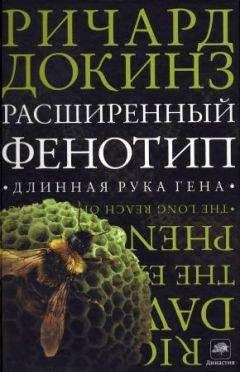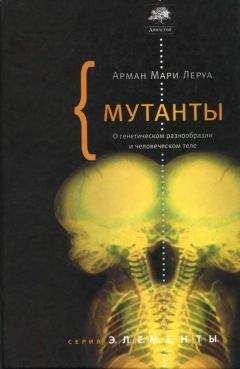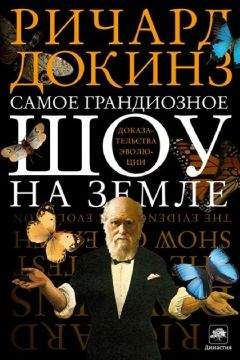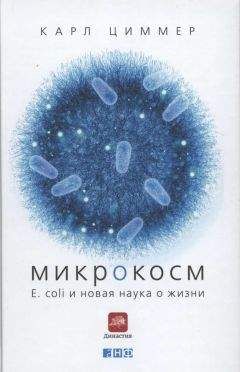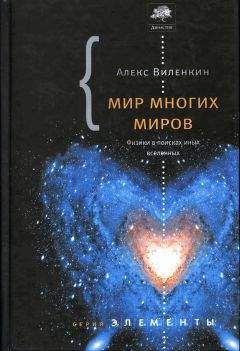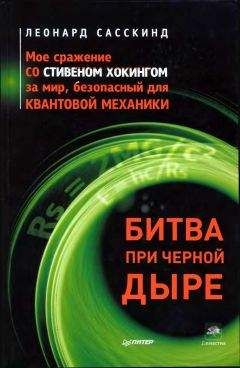Ознакомительная версия.
Animals. Oxford: Oxford University Press. {274}
Frisch, K. von (1967). A Biologist Remembers. Oxford: Pergamoe Press. Frisch, K. von (1975). Animal Architecture. London: Butterworths. Futuyma, D. J., Lewontin, R. C, Mayer, G. C, Seger, J. &
Stubblefield, J. W. (1981). Macroevolution conference. Science 211, 770.
Gh I SELIN, М. T. (1974a). The Economy of Nature and the Evolution of Sex. Berkeley: University of California Press.
Ghiselin, М. T. (1974b). A radical solution to the species problem. Systematic Zoology 23,535–544.
Ghiselin, М. T. (1981). Categories, life and thinking. Behavioral and Brain Sciences 4, 269–313.
Gilliard, E. T. (1963). The evolution of bowerbirds. Scientific American 209 (2), 38–46.
Gilpin, М. E. (1975)- Group Selection in Predator-Prey
Communities. Princeton, N.J.: Princeton University Press.
Gingerich, P. D. (1976). Paleontology and phylogeny: patterns of evolution at the species level in early Tertiary mammals. American Journal of Science 276,1-28. Glover, J. (ed.) (1976). The Philosophy of Mind. Oxford: Oxford University Press.
Goodwin, В. C. (1979). Spoken remark in Theona to Theory 13, 87-107. Gorczynski, R. M. & Steele, E. J. (1980). Inheritance of acquired immunological tolerance to foreign faistocompatibiiity antigens in mice. Proceedings of the National Academy of Sciences, U.S.A. 77, 2871–2875. Gorczynski, R. M. & Steele, E. J. (1981). Simultaneous yet independent inheritance of somatically acquired tolerance to two distinct H-2 antigenic hap-lotype determinants in mice. Nature 289, 678–681.
Gould, J. L. (1976). The dance language controversy. Quarterly Review of Biology 51, 211–244.
Gould, S. J. (1977a). Ontogeny and Phylogeny. Cambridge, Mass.: Harvard University Press.
Gould, S. J. (1977b). Caring groups and selfish genes. Natural History 86 (12), 20–24.
Gould, S. J. (1977c). Eternal metaphors of palaeontology. In Patterns of Evolution (ed. A. Hallam), pp. 1-26. Amsterdam: Elsevier.
Gould, S. J. (1978). Ever Since Darwin. London: Burnett.
Gould, S. J. (1979). Shades of Lamarck. Natural History 88 (8), 22–28.
Gould, S. J. (1980a). The promise of paleobiology as a nomothetic, evolutionary discipline. Paleobiology 6, 98-118.
Gould, S. J. (1980b). Is a new and general theory of evolution emerging? Paleobiology 6,119–130.
Gould, S. J. & Calloway, C. B. (1980). Clams and brachiopods — ships that pass in the night. Paleobiology 6, 383–396.
Gould, S. J. & Eldredge, N. (1977). Punctuated equilibria: the tempo and mode of evolution reconsidered. Paleobiology 3, 115–151.
Gould, S. J. & Lewontin, R. C. (1979). The spandrels of San Marco and the Panglossiae paradigm: a critique of the adaptationist programme. Proceedings of the Royal Society of London, В 205, 581–598.
Grafen, A. (1979). The hawk-dove game played between relatives. Animal Behaviour 27, 905–907.
Grafen, A. (1980). Models of r and d. Nature 284, 494–495.
Grant, V. (1978). Kin selection; a critique. Biologisches entralblatt 97, 385–392. Grasse, P. P. (1959). La reconstruction du eld et les coordinations interindi-vidueiles chez Belucositermes natalensis et Cubitermes sp. La theorie de la stig-mergie: essai d’interpretation du comportemeet des termites constructeurs. Insectes Sociaux 6, 41–80.
Greenberg, L. (1979). Genetic component of bee odor in kin recognition. Science 206,1095–1097.
Greene, P. J. (1978). From genes to memes? Contemporary Sociology 7, 708–709.
Gregory, R. L. (1961), The brain as an engineering problem. In Current Problems in Animal Behaviour (eds W. H. Thorpe & O. L. Zangwill), pp. 307–330. Cambridge: Cambridge University Press.
Grey Walter, W. (1953). The Living Brain. London: Duckworth.
Grue, P. (1978). Cyioplasmic Genetics and Evolution. New York: Columbia University Press.
Gurdon, J. B. (1974). The Control of Gene Expression in Animal Development. Oxford: Oxford University Press.
Hailman, J. P. (1977). Optical Signals. Bloomington: Indiana University Press. Haldane, J. B. S. (1932a), The Causes of Evolution. London: Longman’s Green.
Haldane, J. B. S. (1932b). The time of action of genes, and its bearing on some evolutionary problems. American Naturalist 66, 5-24.
Haldane, J. B. S. (1955). Population genetics. New Biology 18, 34–51.
Hall AM, A. (1975). Evolutionary size increase and longevity in Jurassic bivalves and ammonites. Nature 258, 493–496.
Hall am, A. (1978). How rare is phyietic gradualism and what is its evolutionary significance? Paleobiology 4,16–25.
Hamilton, W. D. (1963). The evolution of altruistic behavior. American Naturalist 97, 31–33.
Hamilton, W. D. (1964a). The genetical evolution of social behaviour.
I. Journal of Theoretical Biology 7,1-16.
Hamilton, W. D. (1964b). The genetical evolution of social behaviour.
II. Journal of Theoretical Biology 7, 17–32.
Hamilton, W. D. (1967). Extraordinary sex ratios. Science 156, 477–488. Hamilton, W. D. (1970). Selfish and spiteful behaviour in an evolutionary model. Nature 228,1218–1220.
Hamilton, W. D. (1971a). Selection of selfish and altruistic behavior in some extreme models. In Man and Beast: Comparative Social Behavior (EDS J. F.
Eisenberg & W. S. Dillon), pp. 59–91. Washington, D.C.: Smithsonian Institution.
Hamilton, W. D. (1971b). Addendum. In Group selection (ed. G. C. Williams), pp. 87–89. Chicago: Aldine, Atherton.
Hamilton, W. D. (1972). Altruism and related phenomena, mainly in social insects. Annual Review of Ecology and Systematics 3, 193–232.
Hamilton, W. D. (1975a) Innate social aptitudes of man: an approach from evolutionary genetics. In: Biosocial Anthropology (ed. R. Fox), pp. 133–155. London: Malaby Press.
Hamilton, W. D. (1975b). Gamblers since life began: barnacles, aphids, elms. Quarterly Review of Biology 50,175–180. {276}
Hamilton, W. D. (1977). The play by nature. Science 196, 757–759. Hamilton, W. D. & May R. M. (1977). Dispersal in stable habitats. Nature 269, 578–581.
Hamilton, W. J. & Orians, G. H. (1965). Evolution of brood parasitism in altricial birds. Condor 67, 361–382.
Hansell M. H. (1984). Animal architecture and building behaviour. London: Longman.
Hardin, G. (1968). The tragedy of the commons. Science 162,1243–1248. Hardin, G. (1978). Nice guys finish last. In Sociohiology and Human Nature (eds M. S. Gregory et al.), pp. 183–194. San Francisco: Jossey-Bass.
Hardy, A. C. (1954). Escape from specialization. In Evolution as a Process (eds J. S. Huxley, A. C. Hardy & E. B. Ford), pp. 122–140. London: Allen & Unwin.
Harley, C. B. (1981). Learning the evolutionarily stable strategy. Journal of Theoretical Biology, 89, 611–833.
Harpending, H. C. (1979). The population genetics of interaction. American Naturalist 113, 622–630.
Harper, J. L. (1977). Population Biology of Plants. London: Academic Press. Hartung, J. L. (1981). Transfer RNA, genome parliaments, and sex with the red queen. In Natural Selection and Social Behavior: Recent Research and New Theory (eds R.D. Alexander & D. W. Tinkle). New York: Chiron, pp. 382–402.
Harvey, P. H. & Mace, G. M. (1982) Comparisons between taxa and adaptive trends: problems of methodology. In Current Problems in Sociohiology (ed. King’s College Sociobiology Group), pp. 343–361. Cambridge: Cambridge University Press.
Heinrich, B. (1979). Bumblebee Economics. Cambridge, Mass.: Harvard University Press.
Hickey, W. A. & Craig, G. B. (1968). Genetic distortion of sex ratio in a mosquito, Aedes aegypti. Genetics 53, 1177–1196.
Hinde, R. A. (1975). The concept of function. In Function and Evolution of Behaviour (eds G. Baerends, C. Beer & A. Manning), pp. 3-15. Oxford: Oxford University Press.
Hinde, R. A. (1981). Animal signals: ethological and game theory approaches are not incompatible. Animal Behaviour 29, 535–542.
Hinde, R. A. & Steel, E. (1978). The influence of daylength and male vocalizations on the estrogen-dependent behavior of female canaries and budgerigars, with discussion of data from other species. In Advances in the Study of Behavior, Vol. 8 (eds J. S. Rosenblatt et al.), pp. 39–73. New York: Academic Press. Hines, W. G. S. & Maynard Smith, J. (1979). Games between relatives. Journal of Theoretical Biology 79,19–30.
Hofstadter, D. R. (1979). Godel, Escher, Bach: An Eternal Golden Braid. Brighton: Harvester Press.
Holldobler, B. & Michener, C. D. (1980). Methods of identification and discrimination in social Hymenoptera. In Evolution of Social Behavior: Hypotheses and Empirical Tests (ed. H. Markl), pp. 35–57. Weinheim: Verlag Chemie.
Holmes, J. C. & Bethel, W. M. (1972). Modification of intermediate host behaviour by parasites. In Behavioural Aspects of Parasiie Transmission (EDS E. U. Canning & C. A. Wright), pp. 123–149. London: Academic Press. {277} Howard, J. C. (1981). A tropical volute shell and the Icarus syndrome. Nature 290, 441–442.
Hoyle, F. (1964). Man in the Universe. New York; Columbia University Press. Hull, D. L. (1976). Are species really individuals? Systematic Zoology 25, 174–191.
Hull, D. L. (1980a). The units of evolution: a metaphysical essay. In Studies in the Concept of Evolution (eds U. J. Jensen & R. Harre). Brighton: Harvester Press.
Hull, D. L. (1980b). Individuality and selection. Ann ual Review of Ecology and Syslematics 11, 311–332.
Huxley, J. S: (1912). The individual in the Animal Kingdom. Cambridge: Cambridge University Press.
Huxley, J. S. (1932). Problems of Relative Growth. London: McVeagh.
Jacob, F. (1977). Evolution and tinkering. Science 196,1161–1166.
Janzen, D. H. (1977). What are dandelions and aphids? American Naturalist 111, 586–589.
Jensen, D. (1961). Operationism and the question «Is this behavior learned or innate?» Behaviour 17,1–8.
Jeon, K. W. & Danielli, J. F. (1971). Micrurgical studies with large free-living amebas. International Reviews of Cytology 30, 49–89.
Judson, H. F. (1979). The Eighth Day of Creation. London: Cape.
Kalmus, H. (1955). The discrimination by the nose of the dog of individual human odours. British Journal of Animal Behaviour 3, 25–31.
Keeton, W. T. (1980). Biological Science, 3rd edn. New York: W W Norton. Kempthorne, O. (1978). Logical, epistemological and statistical aspects of nature-nurture data interpretation. Biometrics 34,1-23.
Kerr, A. (1978). The Ti plasmid of Agrobacterium. Proceedings of the 4th International Conference, Plant Pathology and Bacteriology, Angers, 101–108. Kettlewell, H. B. D. (1955). Recognition of appropriate backgrounds by the pale and dark phases of Lepidoptera. Nature 175, 943–944.
Ознакомительная версия.
